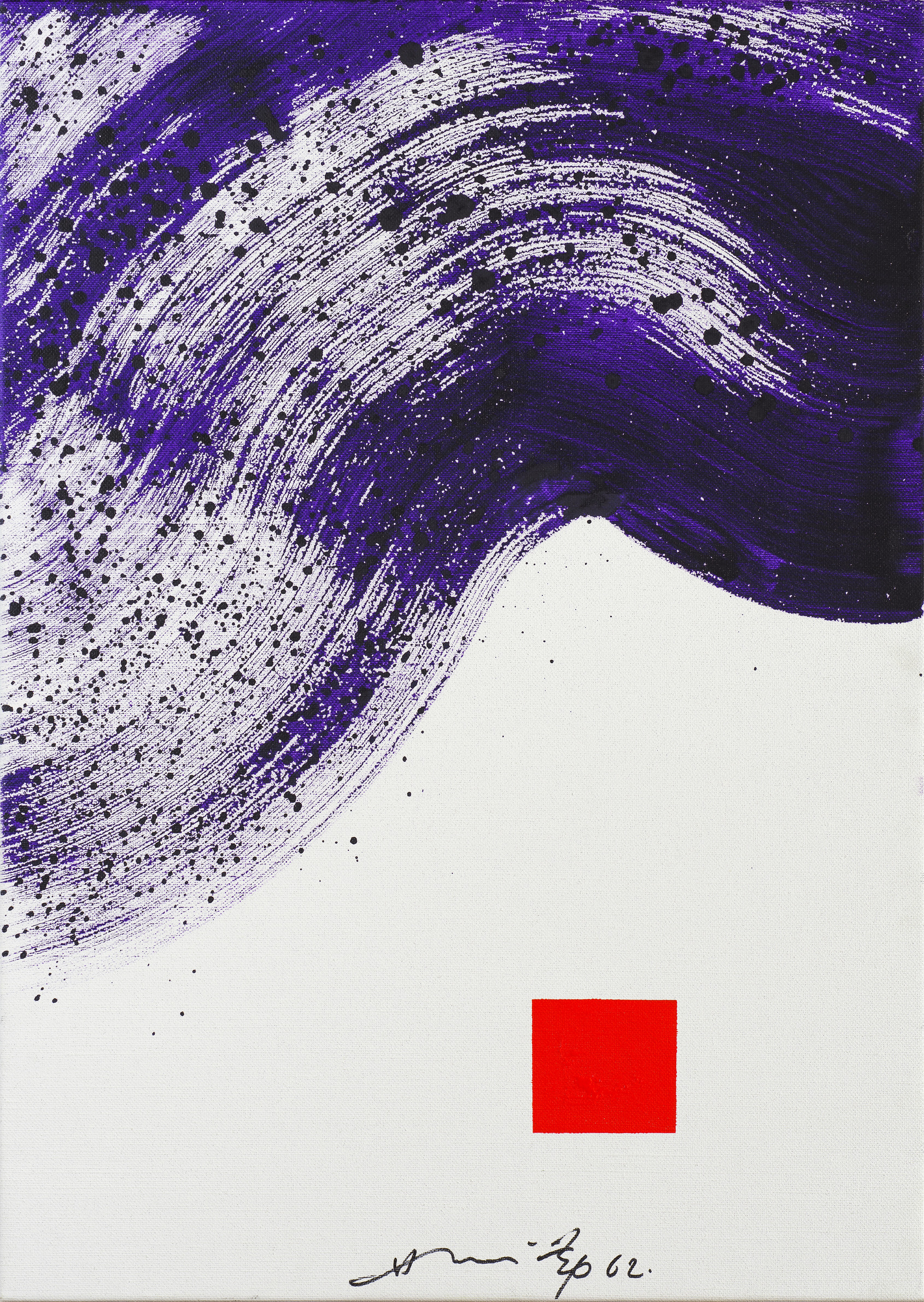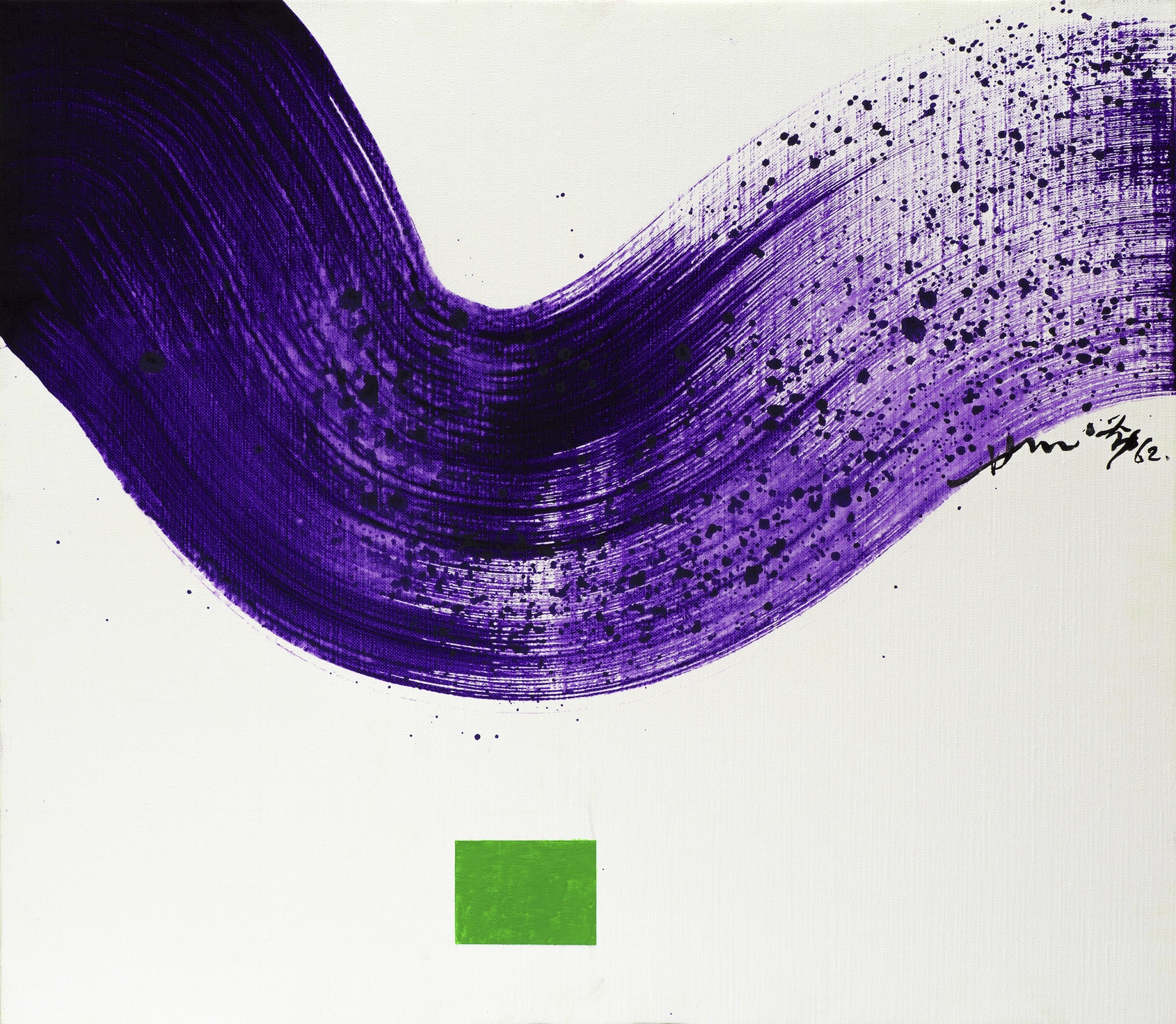
Hsiao Chin embodies the visionary figure of a Chinese artist-cum-citizen of the world whose life’s work represents an openminded conversation with cultures that at times appear wildly different.
Hsiao Chin was born in Shanghai in 1935, after the Chinese Revolution – which culminated in 1949 in the proclamation of the People’s Republic of China – and moved with his uncle to Taiwan where he studied art and founded the Ton-Fan Group in 1956. Thereafter, he moved to Europe to further his studies, first in Spain and then in Italy, where he got to know Lucio Fontana and co-founded the Punto International Art Movement in 1961. Hsiao Chin left Italy in the 1970s to teach painting in the United States, where he crossed paths with Mark Rothko and Willem De Kooning, and where he discovered Abstract Expressionism. Hsiao Chin’s cosmopolitan approach included a marked interest in Japan and the Gutai Group with their spiritual,performance painting. As Édouard Glissant said, “Cultures change through exchange, and exchange through change.” This principle, which is also one of the founding principles of modern art, Hsiao Chin made his life’s mission, and the basis of his profoundly cross-cultural and equally universal artistic output that traversed the entire history of 20th century abstract art.
This cultural mix led Hsiao Chin to produce work that ranks among the most original and cosmopolitan of 20th century Asian abstract art. While “The Colours of Ch’an. Tribute to Hsiao Chin” is the artist’s first exhibition in a French museum, his work has been shown in major museums throughout Asia, notably in the important retrospective held at the China Art Museum in Shanghai in 2018. It is also found in the collections of numerous museums throughout the world, from MoMA to the Met in New York, from the Philadelphia Museum of Art to those in Toronto, Lausanne and Barcelona, and now the Musée National des Arts Asiatiques – Guimet, thanks to the generosity of the artist and his foundation, the Hsiao Chin Foundation in Kaohsiung. The Paris exhibition, also made possible by generous assistance from the artist’s
foundation, presents a body of work that represents key moments and developments in Hsiao Chin’s artistic output, from the 1950s onwards. These iconic pieces have been selected from the foundation’s collection as well as from private European and Asian collections and archives.
The Punto Movement (1961–1966), founded in Milan and based on the teachings of Ch’an philosophy, notably the notion of contemplation, is the only 20th century Western art movement to have been created by a Chinese artist. “Punto” is the Italian word for “point”, and here refers to the smallest component in art
as well as the Far Eastern philosophical concept that all is one. Hsiao Chin incorporated expressions of Ch’an culture throughout his work, in its most essential forms. An art of signs born of and through gesture.
A life’s work composed of a voyage of signs and an ode to the purity of gesture. “Dancing Light”, the title of a series by Hsiao Chin in which the artist draws upon the art of gesture at the heart of Chinese calligraphy, could be taken to be the collective title for his entire artistic output. “Were they signs? They were gestures,
inner gestures, ones for which we have no actual limbs, but their same urges, tensions, momentum,” 1 wrote Henri Michaux about his own drawings inspired by Ch’an. Hsiao Chin’s painting reveals what with Michaux might be called “ideographic compositions”. The uniqueness of Hsiao Chin’s work, however, lies in the multitude of echoes or references it conveys. In this voyage of signs that his work constitutes we find other Asian philosophies, notably Taoism and Tibetan Buddhism, as well as geometric forms and cosmogonic vocabulary found in Indian mandala painting.
Indeed, some of Hsiao Chin’s pictures recall the work of another master of modernity of 20th century Asian art, the Indian painter S.H. Raza.
I was lucky enough to meet and get to know Hsiao Chin through our mutual friend Thomas Abegg. Hsiao Chin is someone who belongs not only to the highly select group of great 20th century artists, but also to the equally rare and precious fraternity of beings who smile upon life. I see this smile in his art, in his
radiant work that is a hymn to life and the universe. A curator is initially a conveyor of images. Hsiao Chin’s last public exhibition in Paris dates back to 1964 at the Galerie Internationale d’Art Contemporain. Since then, much art has flowed under the city’s bridges. Fifty years on, it’s a major event to see this great artist
celebrated within the walls of the Hôtel d’Heildelbach, home to the Musée National des Arts Asiatiques – Guimet. I’m grateful to Sophie Makariou for so enthusiastically welcoming this idea of paying tribute to Hsiao Chin in as meaningful a place as Guimet, Europe’s foremost window onto Asia. Wandering through
the museum’s collections is like a syncretic progression through the cultures and philosophies of Asia, akin to the cultural vibrancy that marks the life and work of Hsiao Chin.
Jérôme Neutres >Doctor of philosophy, is an author and curator, including of this exhibition. He is Director of Strategy at the Réunion des Musées Nationaux – Grand Palais, and President of the Musée du Luxembourg, and was a former board member of the Musée National des Arts Asiatiques – Guimet.
The Beginning of Tao – 2, 1962, 70 x 50 cm Encre et acrylique sur toile Ink and acrylic on canvas Collection privée / Private collection, Europe
The Beginning of Tao – 3, 1962 70 x 80 cm Encre et acrylique sur toile Ink and acrylic on canvas Collection privée, Asie / Private collection, Asia

The Beginning of Tao – 2, 1962, 70 x 50 cm Encre et acrylique sur toile Ink and acrylic on canvas Collection privée / Private collection, Europe

The Beginning of Tao – 3, 1962 70 x 80 cm Encre et acrylique sur toile Ink and acrylic on canvas Collection privée, Asie / Private collection, Asia